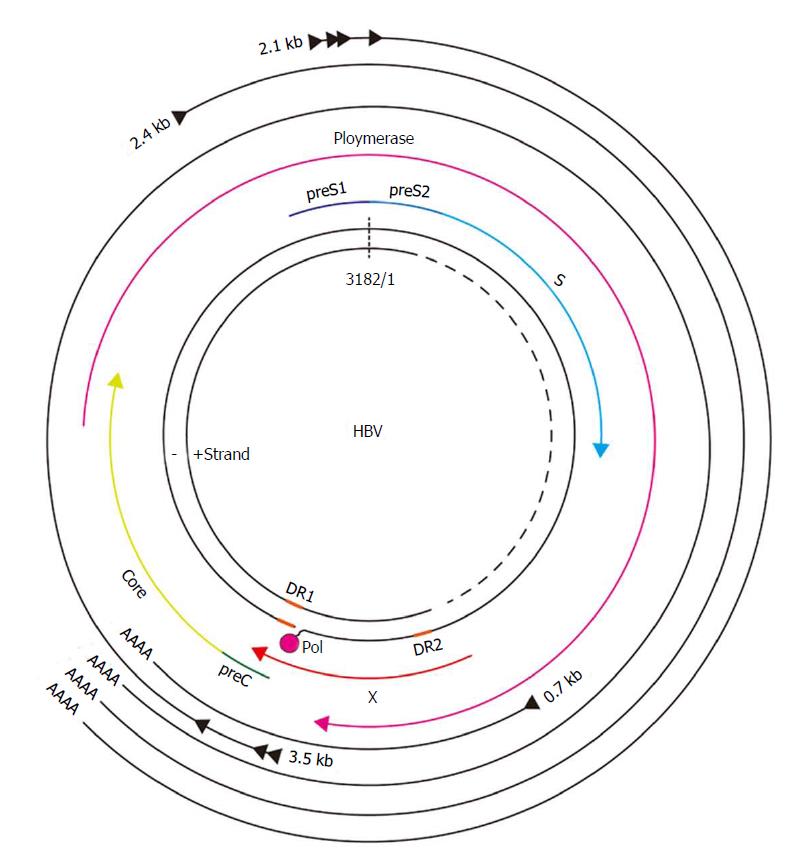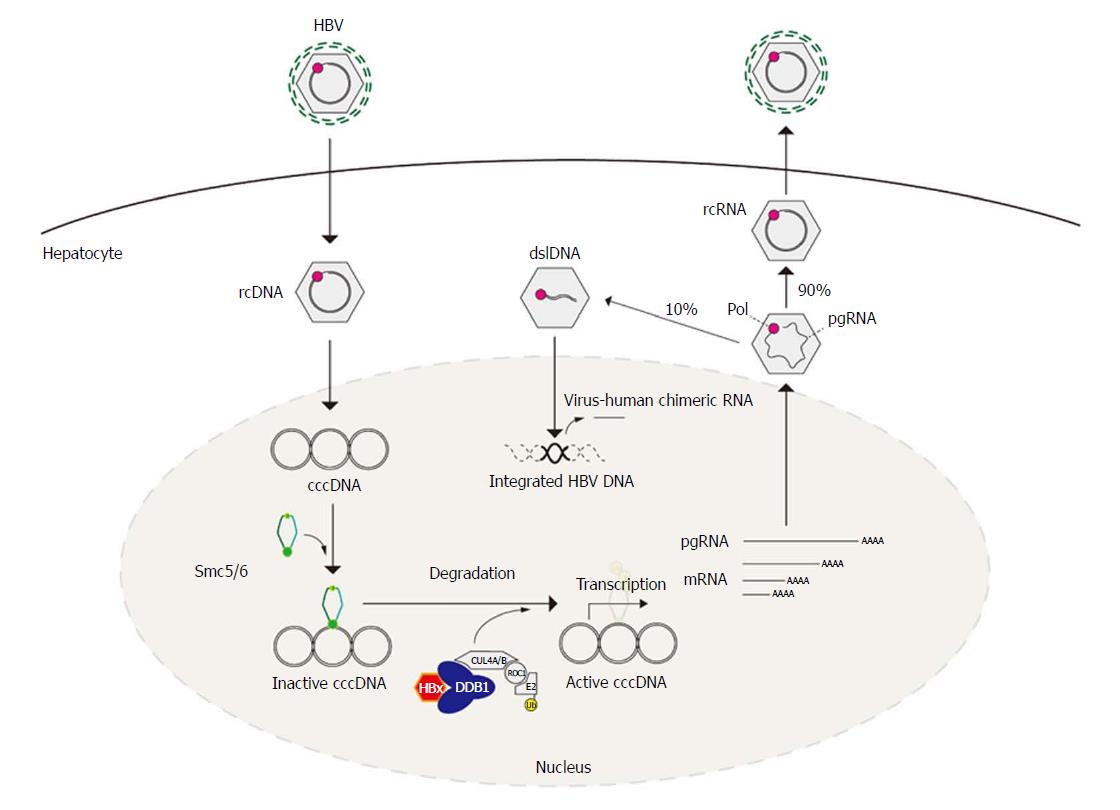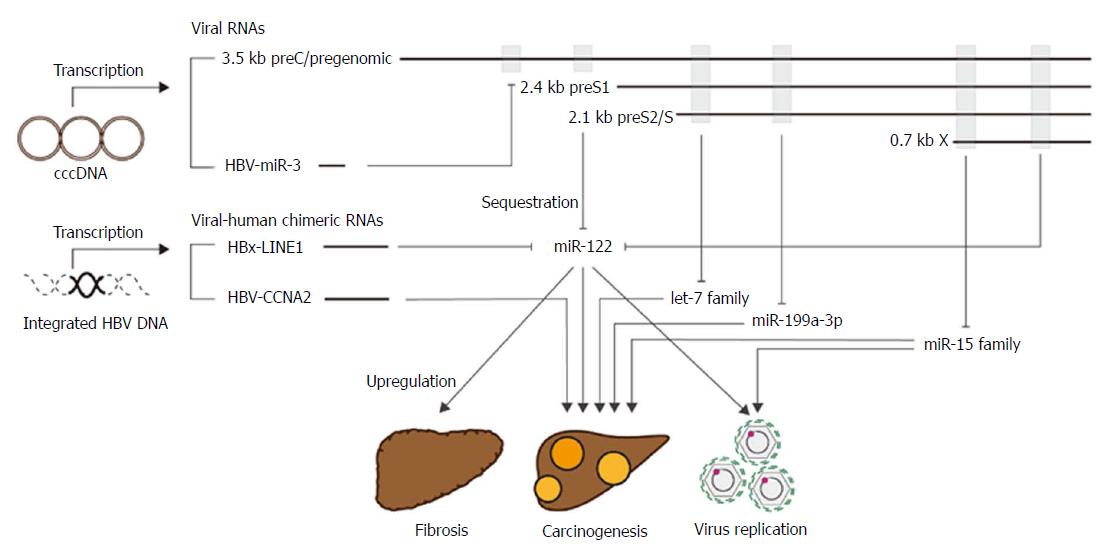Copyright
©The Author(s) 2018.
World J Gastroenterol. Jun 7, 2018; 24(21): 2261-2268
Published online Jun 7, 2018. doi: 10.3748/wjg.v24.i21.2261
Published online Jun 7, 2018. doi: 10.3748/wjg.v24.i21.2261
Figure 1 Hepatitis B virus genome structure.
The 3.2-kb partially double-stranded relaxed circular DNA genome of the hepatitis B virus (HBV) is shown in the center. The surrounding colored arrows indicate the locations of the four overlapping open-reading frames. The black arrows show the viral mRNA. Pol: Polymerase; DR1: Direct repeat 1; DR2: Direct repeat 2.
Figure 2 The life cycle of the hepatitis B virus.
Hepatitis B virus (HBV) virions infect hepatocytes, and then rcDNA enters the nucleus and is converted to covalently closed circular DNA (cccDNA). Structural maintenance of chromosomes 5 and 6 (Smc5/6) can silence cccDNA, but HBV regulatory protein X (HBx) hijacks the Cullin 4-ROC1 RING E3 ubiquitin ligase (CRL4) complexes by binding to damage-specific DNA-binding protein 1 (DDB1) to target Smc5/6 for ubiquitination. Smc5/6 is consequently degraded by the proteasome, and cccDNA can then be transcribed. Transcribed HBV pregenomic RNA (pgRNA) is co-packaged with reverse transcriptase in capsids and is normally (~90%) reverse-transcribed into rcDNA, while double stranded linear DNA (dslDNA) is rarely (10%) synthesized depending on the binding region of the RNA primer. dslDNA can be integrated into the host cell genome, and virus-human chimeric RNA can be transcribed from integrated HBV DNA. After reverse transcription, the mature nucleocapsids can either be secreted as virions or cycle to the nucleus to add to the cccDNA pool.
Figure 3 Hepatitis B virus-related RNAs alone have diverse effects on the host.
Hepatitis B virus (HBV) mRNAs and HBV-miR-3 are transcribed from cccDNA, while viral-human chimeric RNAs are transcribed from integrated HBV DNA. These RNAs, except HBV-CCNA2, have complementary lesion(s) to cellular micro RNAs (miRNAs) and act as miRNA sponges, in turn triggering upregulated expression of the miRNA target and resulting in the induction of HBV pathogenesis. HBV-CCNA2 promotes tumor development through the newly synthesized chimeric transcript, which has new splice sites in the pre-mRNA produced by viral DNA integration.
- Citation: Sekiba K, Otsuka M, Ohno M, Yamagami M, Kishikawa T, Suzuki T, Ishibashi R, Seimiya T, Tanaka E, Koike K. Hepatitis B virus pathogenesis: Fresh insights into hepatitis B virus RNA. World J Gastroenterol 2018; 24(21): 2261-2268
- URL: https://www.wjgnet.com/1007-9327/full/v24/i21/2261.htm
- DOI: https://dx.doi.org/10.3748/wjg.v24.i21.2261











